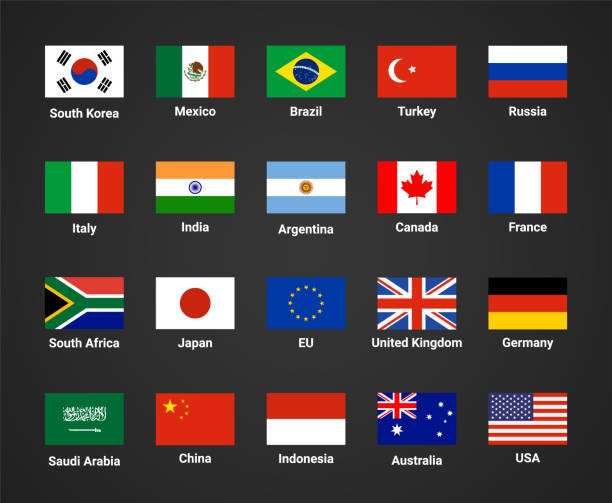Introduction
The solar storm reported by the South African National Space Agency (SANSA) has become one of the most significant space-weather events of the year. Triggered by a series of powerful X-class solar flares, the storm reached levels capable of affecting communications, navigation, and satellite systems across multiple regions. SANSA confirmed that the geomagnetic storm originated from fast-moving coronal mass ejections heading directly toward Earth. As these eruptions interact with our planet’s magnetic field, they create intense disturbances that can impact critical technology. This event highlights how solar activity remains an important factor in modern society, especially as global infrastructure becomes more dependent on satellites. Understanding the cause, impact, and risks of this powerful solar storm is essential for industries, governments, and the public.
Solar Storm and What Triggered the Sudden Rise in Geomagnetic Activity
The recent solar storm was triggered by a sequence of X-class solar flares erupting from an active region on the Sun’s surface. These flares represent the most powerful category of solar radiation bursts and often coincide with coronal mass ejections. In this case, several CMEs were launched within a short time frame and eventually merged as they travelled through space. When they reached Earth, they caused a strong geomagnetic disturbance as charged particles collided with the planet’s magnetic field. This interaction generated what SANSA classified as a severe G4-level geomagnetic storm. Such storms can disrupt the ionosphere, interfere with high-frequency radio waves, and disturb the magnetic field that supports satellite operations. The sudden rise in activity highlights how dynamic and unpredictable the Sun can be, especially during periods of heightened solar cycles.
Solar Storm and Its Impact on Radio Communications and Navigation Systems
A strong solar storm poses a significant threat to communication networks, particularly those that rely on radio frequencies. High-frequency radio signals often bounce off the ionosphere, but geomagnetic disturbances can distort or block that reflection. As a result, aviation, maritime operators, emergency teams, and remote areas using radio links may experience signal fading or complete blackouts. Global navigation systems, including GPS, can also suffer from decreased accuracy. These disruptions occur because the storm alters the density and structure of the ionosphere, causing satellites to miscalculate positions. In everyday life, these effects may lead to navigation errors or delays in communication. SANSA’s alert ensures that industries take precautionary steps to protect equipment and manage risks. While disruptions vary depending on the storm’s intensity, communication outages remain one of the most common consequences.
Solar Storm Effects on Satellites and Space-Orbiting Technology
Satellites are among the most vulnerable technologies during a solar storm, as the surge of charged particles can interfere with their sensitive electronics. When a geomagnetic storm intensifies, satellites may experience unexpected changes in orientation, temporary shutdowns, or increased drag in low-Earth orbit. Increased atmospheric density during storms causes satellites to slow down slightly, requiring adjustments to maintain their proper orbit. These corrections consume fuel and shorten satellite lifespan. Radiation surges can also damage solar panels or disrupt onboard systems. Satellite operators around the world monitor SANSA and other space-weather agencies closely to anticipate risks. Protecting satellites during a storm may involve temporarily switching devices into safe mode or restricting certain operations until the environment stabilises. The current storm reminds us how critical space-weather monitoring has become in the age of global technology.
Solar Storm and Its Influence on Power Systems and Electrical Grids
Power systems can be affected by a solar storm, especially during strong geomagnetic disturbances that induce electric currents in the Earth’s surface. These currents can enter power lines and transformers, causing voltage instability or equipment damage. While South Africa’s grid is less interconnected than those of heavily industrialised nations, SANSA notes that there is still a risk of fluctuations or faults during severe storms. In extreme events, geomagnetic storms have caused large-scale power outages in other countries, such as the 1989 blackout in Quebec. The concern today is that increased digital infrastructure makes power systems more vulnerable to magnetic disturbances. Although major outages are unlikely in South Africa during the current storm, operators remain alert for anomalies. The event highlights the importance of modernising grid systems and preparing for the growing risks associated with intense solar activity.
Solar Storm and the Role of SANSA’s Space Weather Centre in Africa
SANSA’s Space Weather Centre in Hermanus plays a central role in monitoring every major solar storm affecting the African continent. As the only regional facility of its kind, it tracks solar activity, analyses satellite data, and issues early warnings to industries such as aviation, maritime transport, energy, and telecommunications. By working with international partners like NASA and ESA, SANSA ensures that South Africa and neighbouring countries stay informed about space-weather risks. The centre uses magnetometers, ionospheric sensors, and solar-observing instruments to provide accurate forecasts. During severe events, SANSA increases monitoring frequency and provides real-time updates. The recent storm demonstrates how vital this centre is for ensuring regional preparedness. Without SANSA’s alert, many industries would have little time to implement protective measures. The facility strengthens Africa’s scientific capacity and contributes to global space-weather research.
Solar Storm Warnings and Their Importance for Aviation and Maritime Sectors
Aviation and maritime industries rely heavily on radio communication and satellite navigation—two systems vulnerable during a solar storm. Pilots, especially on long-distance polar routes, depend on high-frequency radio channels that can be temporarily disrupted. Navigation systems may also provide inaccurate coordinates during ionospheric disturbances, affecting aircraft tracking and flight planning. The maritime sector faces similar risks, with ships relying on GPS and radio systems for safe navigation. SANSA’s warnings help operators adjust flight paths, prepare alternative communication channels, and plan routes more safely. Airlines may reroute aircraft to avoid areas where communication reliability is uncertain. Ships may delay departures or increase manual navigation checks. The announcements allow safety teams to minimise risk, demonstrating why real-time space-weather monitoring remains essential for global transportation networks.
Solar Storm and the Possibility of Aurora Visibility in Southern Regions
A powerful solar storm increases the likelihood of auroras, commonly known as the northern or southern lights. These colourful displays appear when charged particles from the Sun collide with molecules in Earth’s atmosphere. While auroras are usually visible only near the poles, strong storms can push them toward lower latitudes. SANSA notes that South Africa is generally too far north to experience auroras, but rare sightings have occurred during extreme events. Photographers and sky watchers often track space-weather reports to identify potential viewing opportunities. Under ideal conditions—clear skies, low light pollution, and intense geomagnetic activity—faint auroral glows may become visible in high-altitude areas of the country. The current storm created some excitement among astronomy enthusiasts, even though widespread aurora visibility remains unlikely. Still, storm events highlight nature’s spectacular connection to solar activity.
Solar Storm and the Rise of Global Space-Weather Preparedness
Countries around the world are investing more in space-weather monitoring due to the increasing frequency and intensity of solar storm events. As reliance on satellites, navigation systems, and digital communication grows, the risks from geomagnetic disturbances become more significant. Global space agencies are improving forecasting models, expanding monitoring networks, and upgrading infrastructure to withstand solar radiation. The current storm offers a reminder of why preparedness matters. Telecommunications, aviation, power utilities, and defence agencies all depend on accurate space-weather predictions. SANSA’s involvement in international data-sharing platforms strengthens Africa’s role in global monitoring efforts. By understanding how storms develop and how they impact technology, scientists can help governments plan effective responses. Preparing for solar storms is no longer a niche scientific task—it has become essential for protecting modern society.
Solar Storm Trends and What This Event Means for the Future
The recent solar storm reflects broader trends in the Sun’s activity as it approaches the peak of its current 11-year solar cycle. During these peaks, sunspots, solar flares, and CMEs become more frequent, increasing the likelihood of geomagnetic storms. Scientists expect more intense solar events in the coming years. This means industries and governments must strengthen their preparedness strategies. Investments in shielding satellites, protecting power grids, and improving communication systems will be critical. SANSA and global agencies continue developing updated models to predict solar events more accurately. The latest storm underscores the importance of proactive planning. Understanding the Sun’s behaviour allows societies to reduce risks and respond effectively when disruptions occur. As technology becomes more interconnected, awareness of space-weather hazards becomes increasingly important for long-term resilience.
FAQs
Q1: What caused the latest solar storm warning from SANSA?
The solar storm was triggered by powerful X-class solar flares and CMEs impacting Earth’s magnetic field.
Q2: How can a solar storm affect everyday technology?
A solar storm can disrupt radio communication, GPS accuracy, satellite systems, and occasionally power grids.
Q3: How long do solar storm effects usually last?
A solar storm can last from several hours to a few days, depending on the strength of the solar activity.
Conclusion
The solar storm reported by SANSA highlights how space-weather events can influence modern technology and the daily operations of industries that depend on communications and satellites. While the current storm brought challenges, it also demonstrated the value of strong monitoring systems and early warnings. Understanding these events helps societies prepare, adapt, and protect essential infrastructure. As solar activity intensifies in the coming years, awareness and readiness will be key to minimising risks.




